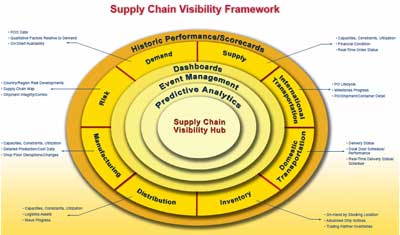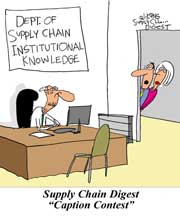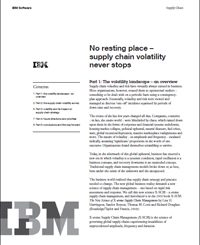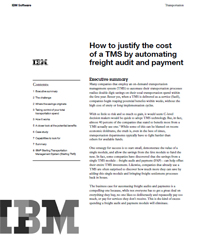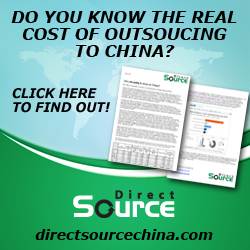 |
April 5 , 2012 - Supply Chain Newsletter |
 |
This Week In SCDigest
FEATURED SPONSOR: Direct Source China |
||
New Report Available For Download |
||
|
|
||||||||||||||||||||||||||||||||||||||||||||||||||||
Upcoming Videocast:
The End of Cheap Oil
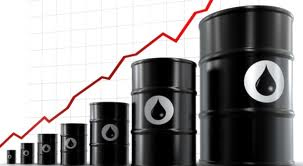
Is Your Supply Chain Obsolete?
Conserve, Cooperate, Get Lean.
Featuring Chuck Taylor, Former Transportation Executive, Founder of Awake!, and Peak Oil Prophet; Greg Holder, CEO and Founder, Compliance Networks; and Kevin Harris, Director, Compliance Networks
Upcoming Videocast:
Operations Rules for Driving
Business Value & Growth
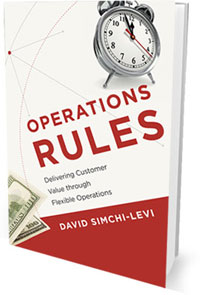
Part 2: Supply Chain Segmentation for Improved Profitability -
Strategies to Trim the Long Tail
Featuring Dr. David Simchi-Levi,
Professor of Engineering Systems, MIT
Important Research Project:
Building the Supply Chain from the Shelf Back

These responses will be aggregated and become part of a new report on Building the Supply Chain from the Shelf Back to be released later this Spring.
Can you please help by taking this quick 10 minute survey? All respondents will receive a summary of the data in just a few weeks.
As promised above, below are a handful of the Feedbacks we received on our First Thoughts columns on metrics and supply chain performance. That includes our Feedback of the Week from David Schneider of David K. SchneIder & Company, who as usual responds with some flare. You will find others as well, and more next week.
Feedback of the Week: On Metrics and Supply Chain Performance: |
||
I suggested that he change the "Idiot" to "Information" - as in "Keep Pushing Information", just so his opinion did not reach the pointed hair boss. Could it mean Knowledge Power and Image? Being a student of that old man Peter Drucker, I look at measurements as a form of manager self-control. Drucker teaches us that the greatest advantage of management by objectives is that the manager controls his own performance. Now Drucker always considered the word control to be in ambiguous word. In his mind it meant that the manager had the ability to direct one's self and one's work. Drucker stressed that the major contributions of management by objectives is that it allows management by self-control to replace the practice of management by domination. A manager needs to know more than what his goals are. He must be able to measure his performance and results against the goal. Many think that is where KPI's come into place. For this practice to work well, you have to set hard, achievable and time bound goals that challenge the manager. Drucker argues that you set a managers goal in a broad sense - something that means something real to the company, and something that the manager understands contributes to the success of the company. I argue that a specific increase in Operating Cash Flow (OCF) is the perfect measurable goal. Frankly, I don't care what the manager does in detail to measure his himself as long as he understands that the only measure I am going to use for him is how he contributed to company OCF. Go ahead and argue that operating cash flow is too broad of a goal, or too hard for a manager to understand. I will just give you a blank stare of contempt. Operating Cash Flow is not hard to understand, and a good leader will help a manager understand what activities a manager does that delivers positive OCF. Yes, there's a whole variety of detailed measures that have an effect on operating cash flow. It is the duty of the managers to figure out how to measure the details of their operation that helps them manage and control the functional area to create more OCF! Too often KPI's are created by the bosses, or by the engineers, delivering a greater world of dueling goals - goals that are in apparent conflict. An example is the need to increase productivity and reduce error rate. Both can contribute to OCF, but there is no guarantee if managers don't make the effort to leverage the gains. I have witnessed countless productivity improvement projects that just created more free time for ways to waste, not adding any profitability because managers chose not to pay attention to the monetization of the KPI improvement. Perhaps KPI means Key Panacea Image? Companies that engage in benchmark measurement and metrics not to improve but for their ego's, to show how well they are doing against other companies. The annual WERC DC Measures could be considered an example of the "my numbers are better than your numbers" process. Before anybody gets up in arms, I believe that the WERC metrics and benchmarking process is a worthwhile effort, as long as you keep a very large grain of salt handy. Other benchmarking efforts, including Mr. Tompkins Supply-Chain Consortium, the transportation cost benchmarking Chainalytics provides, and a whole host of other industry segment benchmarks have their place. These are positive activities for supply chain managers to engage in as long as the managers make a commitment to use the data with a worriers commitment to victory! A well done benchmark effort will deliver imagery of the company's imperfection and operational impotence, highlighting the possibility of improvement as long as management doesn't engage in the insanity of inaction. Maybe we could use the term Kindred Perfection Influence for benchmarking exercises. As in you must make sure that you measure yourself against the kindred company, that you measure perfection the same way, and that you make the commitment to be influenced by the results to take action. Returning to the teachings of Mr. Drucker, I think it is very hard to argue against Operating Cash Flow as a measurable goal. OCF is a clear measure of success or failure of the business enterprise. OCF doesn't work very well when comparing one business to the next, but definitely is a great measurement for an individual enterprises performance. Following Drucker's mandate of self-control of the manager, it is incumbent upon the functional manager to determine not only the performance of his realm, but how his performance contributes to the collection of the gold. David K. Schneider |
||
More on Metrics and Performance:
|
||
As you know, we folks at Supply Chain Visions are pretty serious about the value of Metrics and Performance Measurement / Management / Improvement. Not just "metrics", but the right metrics and the right target levels for the situation. This can change a bit from facility or product / customer type even in the same company. We promote and firmly believe in what you saw with Sara Lee - metrics driven by corporate strategy at the top and linked down throughout the business to each functional area and work center. This may end up with a large number / variety of measures total for the business, but we like to see something in the range of 3-5 at each level. If this structure can be built, and the individual measures captured easily and economically then rolled up through the levels of the business it is like Heaven on earth. BUT, this will not ensure success. Having the right metrics can tell you if you hit your target, but it won't do much more. A good performance management and process improvement program, linked to the metrics will help. Training of employees on the value of their work and how it affects customer satisfaction and profitability - future viability of the business also helps. Finding the root cause for lower that desirable performance and letting the employees who do the work understand the business strategy and develop solutions to the problems builds a foundation that will reap dividends ongoing as problems are resolved in a timely manner at the lowest level possible. This is part of something we call Validating the Value Add. A companywide performance management strategy which functions at the grass roots. I don't think the targets are the problem as much as what is done with the results. Steve Murray Supply Chain Visions |
||
0n Metrics Strategies - I think you are spot on - what is being measured is likely the wrong thing or is measured at a superficial level that doesn't tie to actual business operations. We can also be hurting ourselves with averaging and aggregating - we need to look at the high level, but we must be aware of the exceptions and their root causes, then we know we are looking at the right measures. I think corporations can get stuck on metrics and use the same ones forever vs. adapting them as the business needs change for various reasons. Emily Rodriguez Intel |
||
SUPPLY CHAIN TRIVIA ANSWER
Q: What percent of global oil reserves are controlled by nattional oil companies, such as Saudi Arabia's Saudi Aramco?
A: About 85%; the Exxon Mobile's of the world actually control a small percent of the world's total reserves, though they do develop the reserves for these governments in some cases.
| © SupplyChainDigest™ 2003-2012. All Rights Reserved. SupplyChainDigest PO Box 714 Springboro, Ohio 45066 |
POWERED BY: XDIMENSION |


